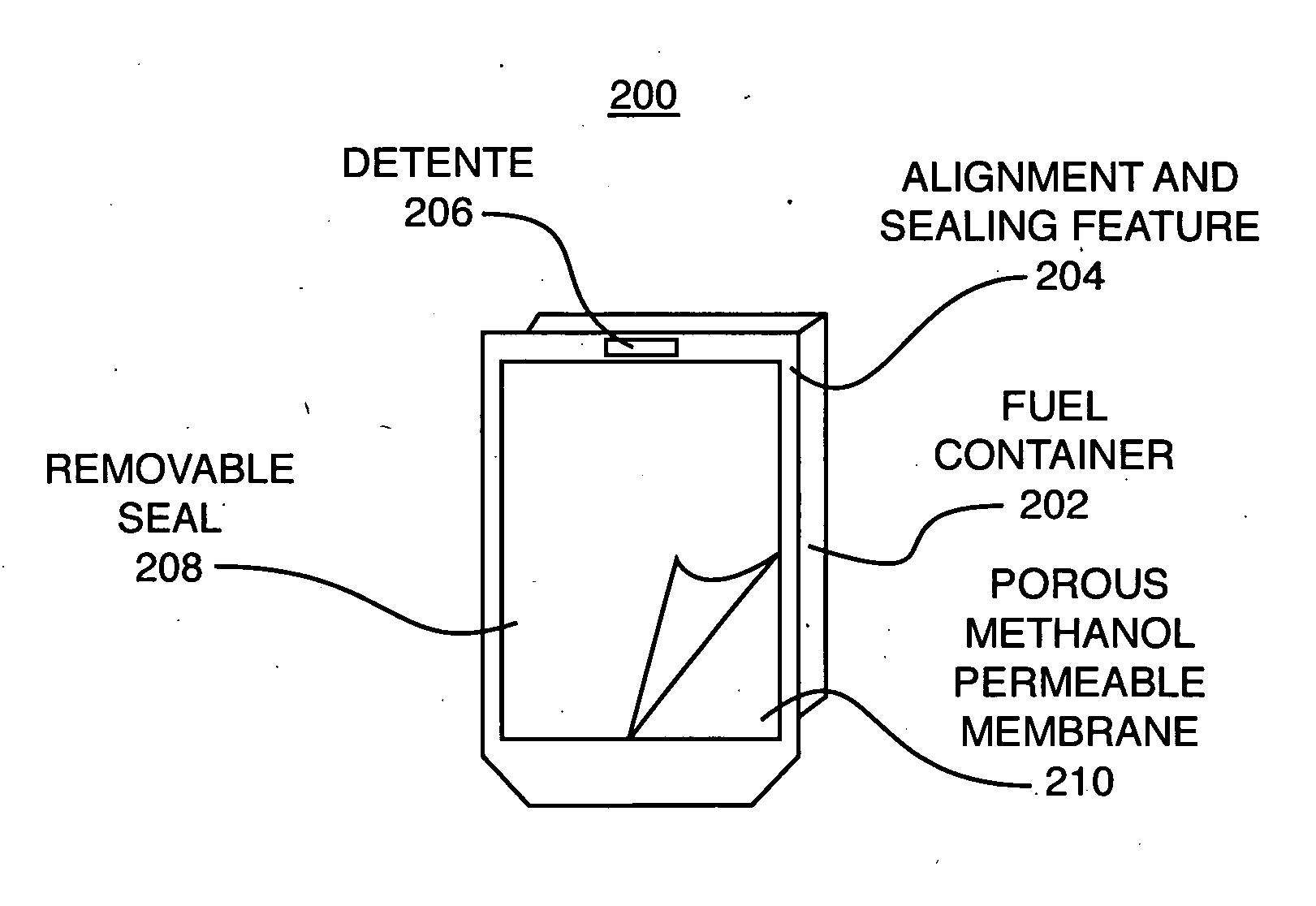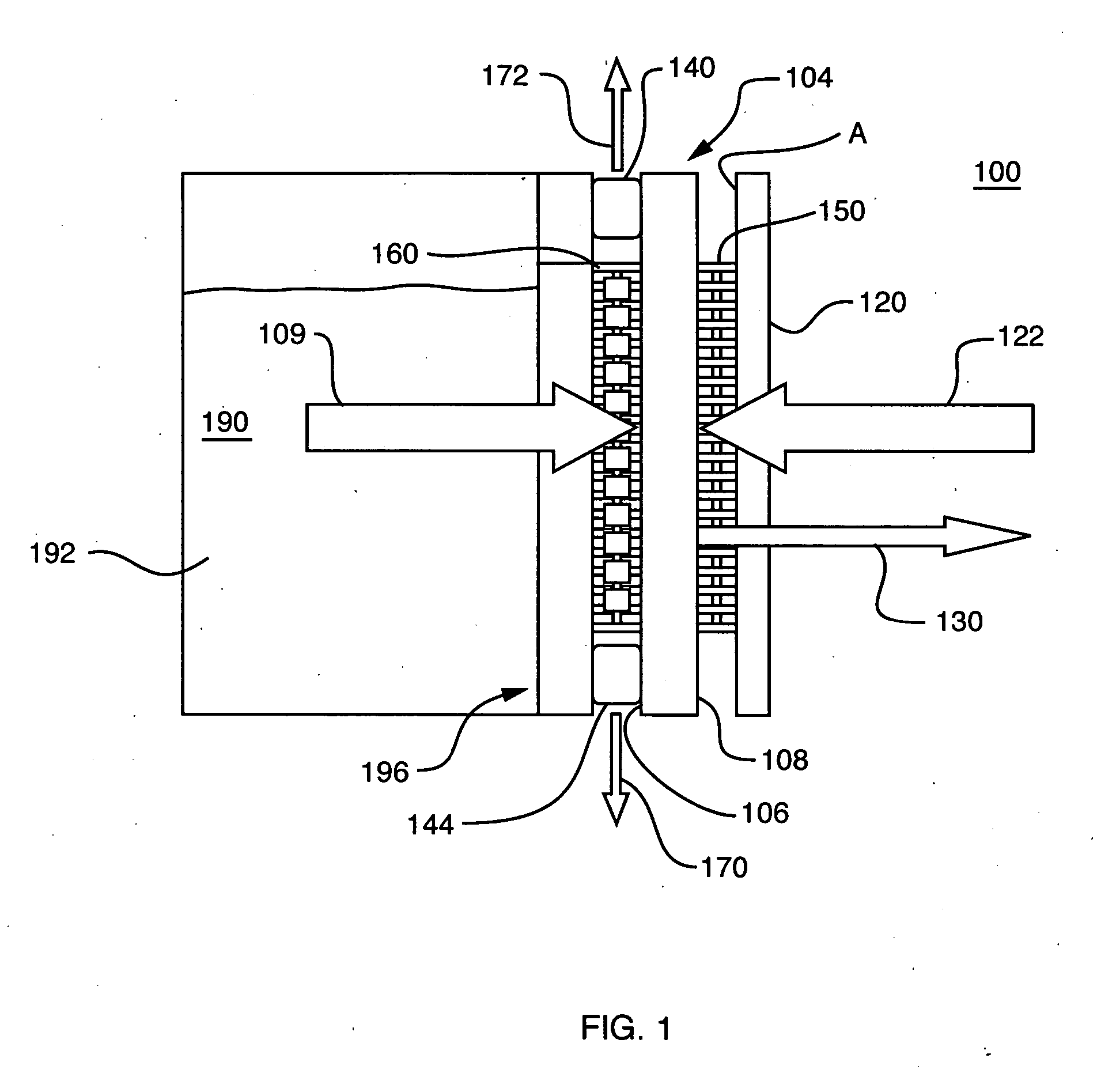Fuel container with reticulated material
a technology of reticulated materials and fuel containers, which is applied in the direction of transportation and packaging, electrical equipment, mechanical equipment, etc., can solve the problems of high power applications, undesirable anode products, and high processing costs of fuel processing, so as to prevent undesired fuel flow, reduce undesired leakage, and facilitate delivery
- Summary
- Abstract
- Description
- Claims
- Application Information
AI Technical Summary
Benefits of technology
Problems solved by technology
Method used
Image
Examples
Embodiment Construction
Fuel Formulation and Properties
[0044] In accordance with the present invention, a viscous fuel is formulated from a fuel substance, thickening substances, and additives, if any, for use in a direct oxidation fuel cell. A portion of the composition of the fuel substance is substantially neat methanol. A thickening substance is added, which imparts thickening, thereby increasing viscosity, while still maintaining the fuel as a freely flowing liquid. In accordance with one implementation of the invention, the thickening substance is a chemical sold commercially under the trademark Carbopol® EZ-3 helogy modifier, which is a hydrophobically modified cross-linked polyacrylate polymer sold by Noveon, Inc. of 9911 Brecksville Road, Cleveland, Ohio 44141-3247, USA. It is desirable to use a formulation that is non-hazardous.
[0045] Depending on the precise formulation of the thickener, it may be necessary or desirable to include a pH balancing substance. In accordance with one aspect of the...
PUM
 Login to View More
Login to View More Abstract
Description
Claims
Application Information
 Login to View More
Login to View More - R&D
- Intellectual Property
- Life Sciences
- Materials
- Tech Scout
- Unparalleled Data Quality
- Higher Quality Content
- 60% Fewer Hallucinations
Browse by: Latest US Patents, China's latest patents, Technical Efficacy Thesaurus, Application Domain, Technology Topic, Popular Technical Reports.
© 2025 PatSnap. All rights reserved.Legal|Privacy policy|Modern Slavery Act Transparency Statement|Sitemap|About US| Contact US: help@patsnap.com



